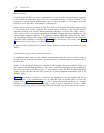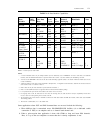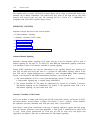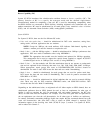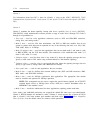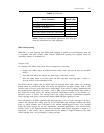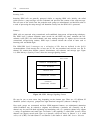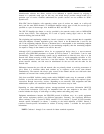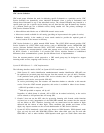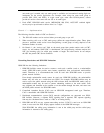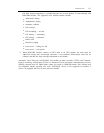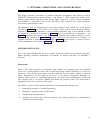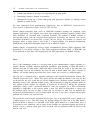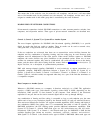
1-28
INTRODUCTION
CBC Service Selection
CBC trunk groups eliminate the need for dedicating specific B-channels to a particular service. CBC
Service Selection can dynamically select individual B-channels (from a group of B-channels) and
allocate those B-channels to any of the subscribed services. The selected B-channel may function as a
specific trunk type (for a specific service) during one call, then later the same B-channel may function
as a different trunk type (for a different service) during another call. The primary advantages of
CBC Service Selection include:
●
●
●
More efficient and effective use of ISDN-PRI network access trunks
More access trunks available for call routing (providing an improvement in the grade of service)
Reduction (usually) in the number of access trunks needed to provide the required grade of
service, because of the increase in efficiency
CBC Service Selection is a public network ISDN feature. The AT&T ISDN network provides CBC
Service Selection for AT&T ISDN nodal services (such as MEGACOM service, MEGACOM 800
service, Software Defined Network (SDN), ACCUNET switched digital service). To use CBC
Service Selection, the customer-premises switch must manage access to these nodal services. System
85 R2V4, Generic 1, and Generic 2 all provide CBC service selection. Because of architectural
differences, these communications systems provide different levels of implementation.
From the customer-premises switch perspective, a CBC trunk group may be designed to support
incoming nodal services, outgoing nodal services, or both.
System 85 R2V4/Generic 2 — CBC Implementation
The following describes details of CBC on System 85 R2V4 and Generic 2:
1.
2.
3.
With System 85, station identification number/automatic number identification (SID-ANI) can
be requested on per trunk group basis but not from the network on a per call basis. Therefore,
if the particular trunk group provides CBC service selection, then all calls, regardless of the
particular nodal service, must provide SID-ANI.
At service provisioning time, the customer will determine whether to subscribe to this network
service. From the AT&T network perspective, this service is available in either of two formats:
●
●
SID-ANI provided on every call
SID-ANI provided on request, call by call
Regardless of which format is selected, ANI or SID can be ordered exclusively, or the service
can be ordered as ANI preferred but will accept SID.
Generic 2 does not use the NSF value for processing incoming calls. Instead, switch functions
are based on an early interpretation of the ISDN-PRI standard that assumes that the network
will not deliver an NSF. Therefore, incoming calls are routed based on the number of digits
delivered and the format of those digits. These conditions (the number and format of the
digits) may impose restraints on the use and administration of CBC Service Selection.
System 85 R2V4 introduced a new trunk type known as ISDN-dynamic. ISDN-dynamic trunk
types can only be used with ISDN-PRI facilities. Most other trunk types may be used with
ISDN-PRI as well as other facilities. ISDN-dynamic trunk types are useful where more than



